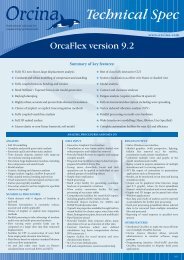


The Sewol Salvage project began in 2015 and was planned to be complete, with the Sewol on land in one piece, before the end of 2016. This did not happen. Numerous other data are listed on Figure 17, enabling the Excel app to be a useful tool to investigate alternative buoyancy arrangements and potential sling alternatives. For example, the soil ultimate bearing capacity used in the above results chart is 50 t/m^2.Įxternal Buoyancy Pontoons, 500t Steel and 165t to 200t Rubber Summary The brown trapezoidal area beneath the seabed indicates the reaction pressure that would provide the force FG, if applied over the area of hull calculated to be in contact with the seabed in this load condition.įigure 17 contains a red warning that the soil pressure diagram needs modification following the first bow lift. This is because the vessel heeled (topside going down) during the first bow lift and will have left an indented and disturbed area of soil. Heeling in the same direction would have less resistance from the soil during a second bow lift. The upper short blue arrow indicates the location and magnitude of the combined sling loads. The upper red arrow indicates the location and magnitude of the combined added buoyancy force. The central purple arrow, pointing down, indicates the location and magnitude of the combined weight force. The lower brown arrow indicates the location and magnitude of FG, the ground reaction force. The variable Tpivot, is the transverse distance of FG from the keel. At this distance, FG causes a moment that balances the system such that there is no net heeling moment. Labels indicate vessel frame numbers. Each frame identified is drawn with a different line color in the Excel chart. The frames are shown with the vessel trimmed. Hence Frame 173, in the region where the bow slings attach, appears raised. Frames 0, 6 and 6 are indicated and can be seen to be without any significant seabed contact.

Heel Equilibrium Solution During Bow Lift


 0 kommentar(er)
0 kommentar(er)
